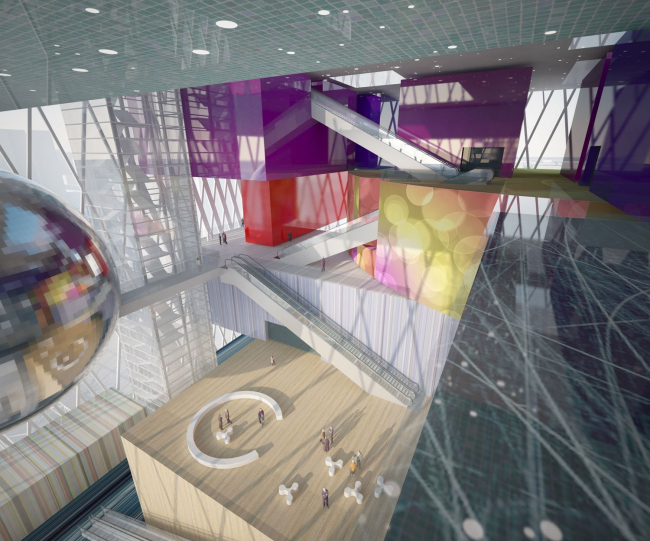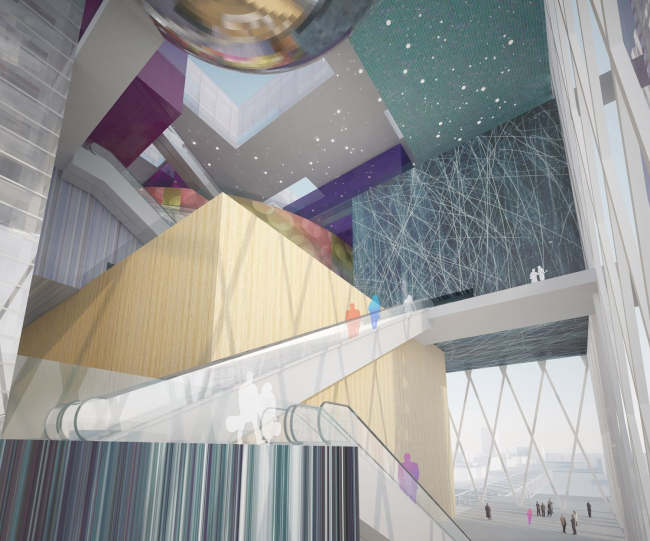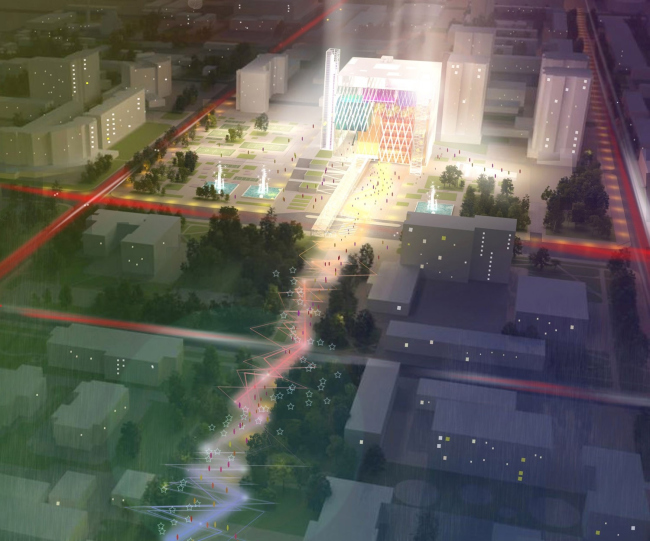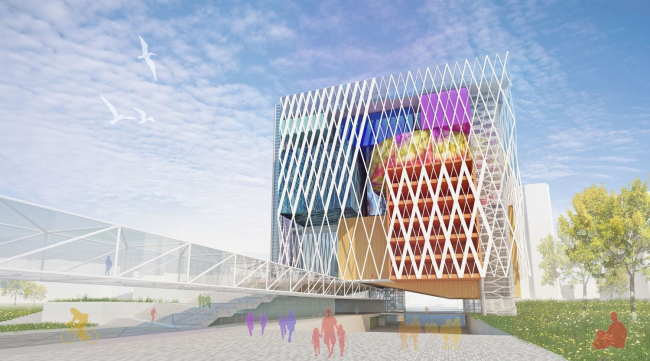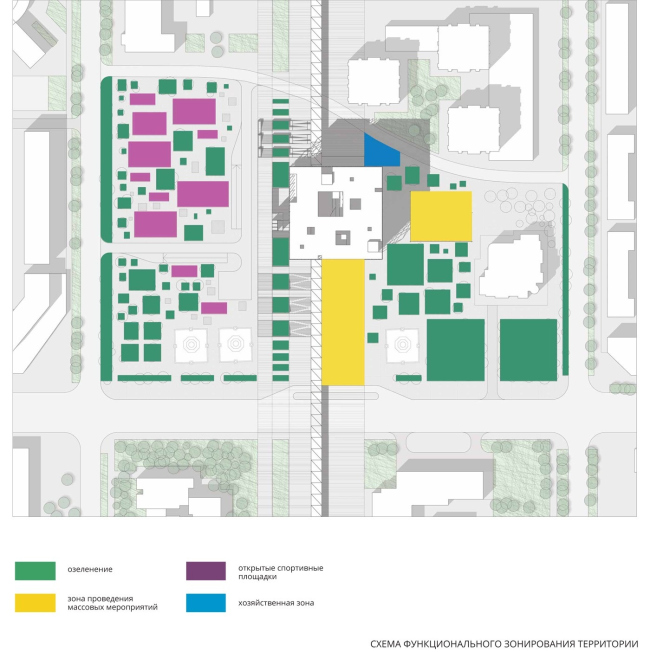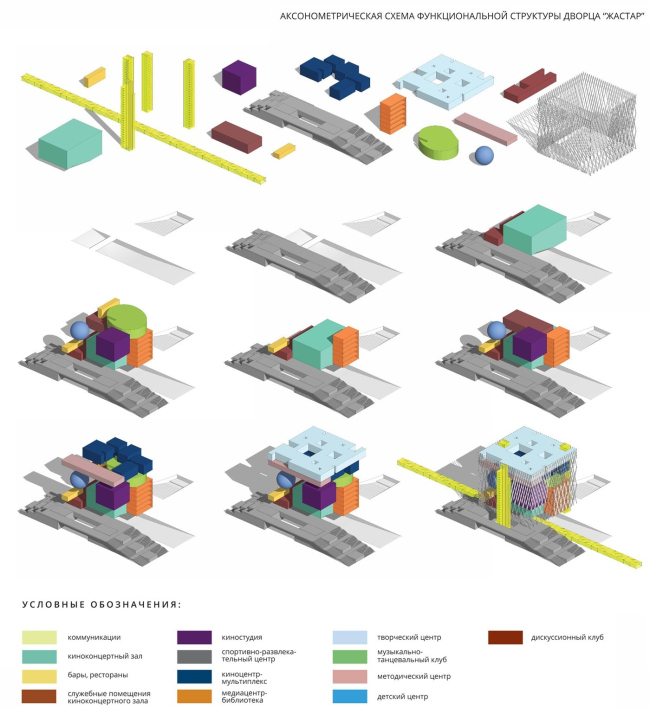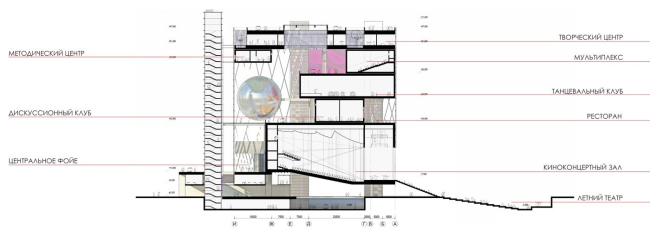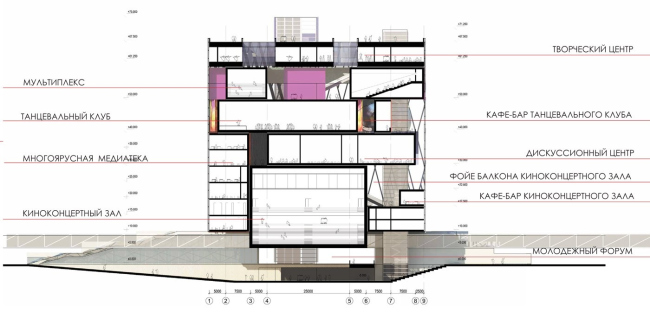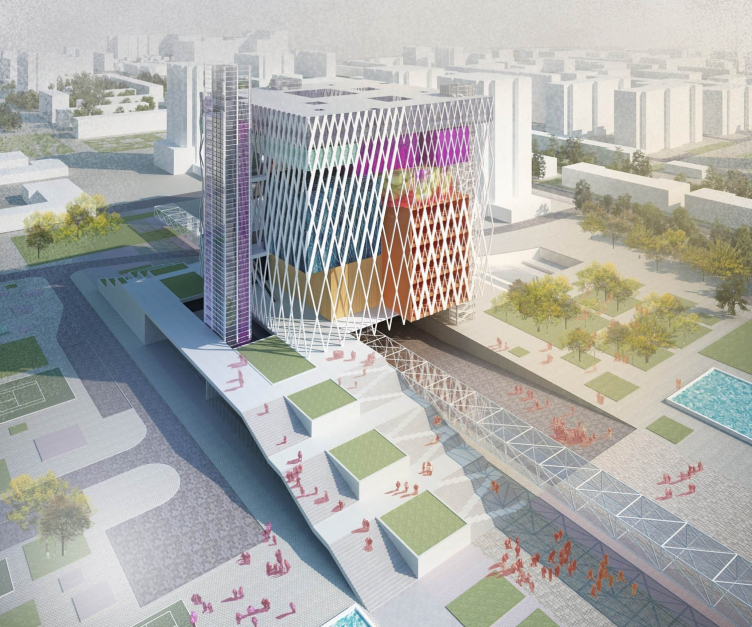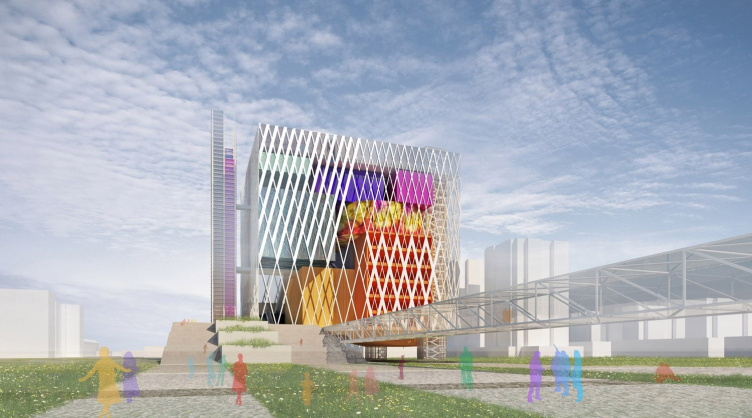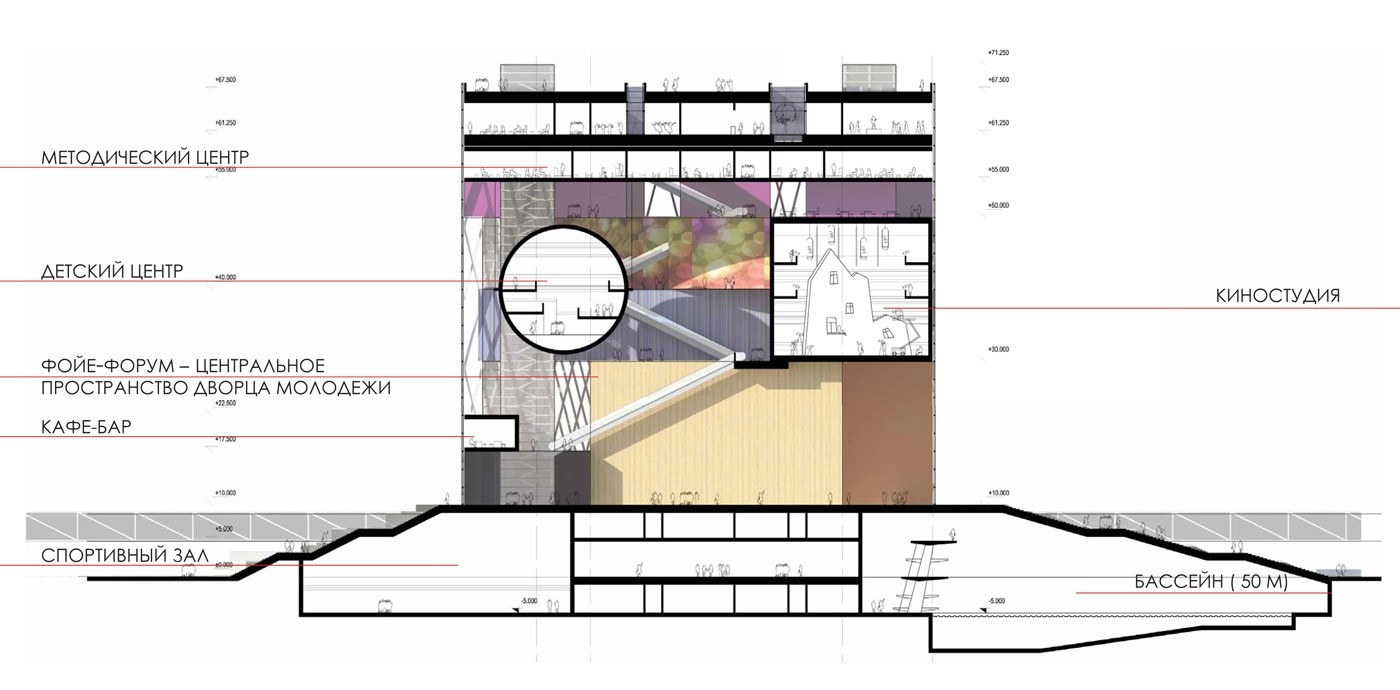The subject of the contest that was participated in by ten architectural
companies from different countries was the reconstruction of "
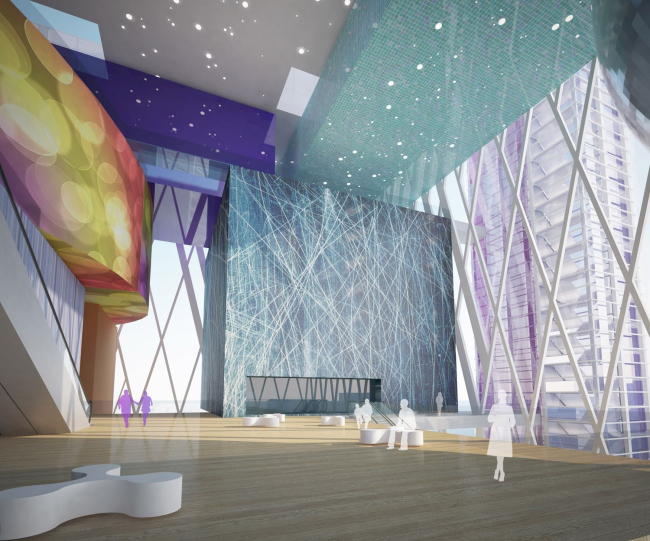
"The functional program of the
Such multi-functionality of the renovated palace is stressed by
"Studio 44" not only with the help of the dramatic volume but by the
town-planning means as well. Treating the palace itself as a complex that is
literally stuffed with premises meant to perform most different functions, the
architects, on the level of the city center, support it with a whole system of
landscaped public territories strung on a single axis and forming a
pedestrian-only boulevard
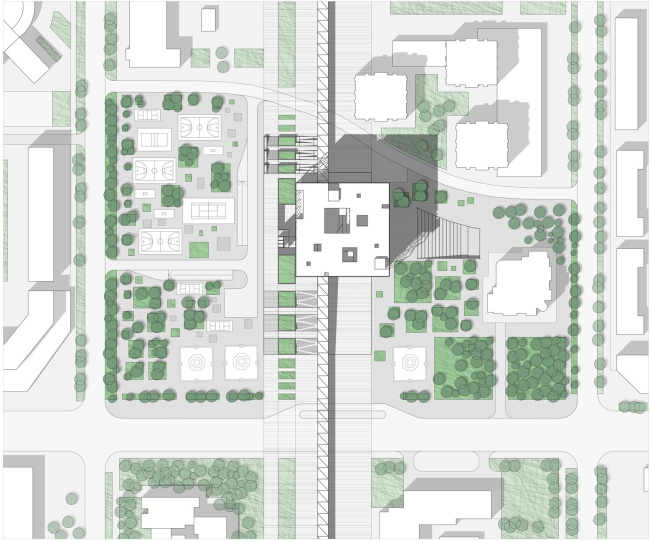
An integral part of the new promenade will be the open-air sports
grounds that are part of "Zhastar" Palace, as well as the green
terrace roof of its sports complex. It is generally worth mentioning that,
while formerly the sports and cultural functions would share the space under
the same roof, now the architects have decided to separate them. The sports
complex consists in fact of a whole group of buildings that adjoin the palace
from the north: here the architects were able to find the room for swimming
pools for children as well as adults, room for gyms, and even for a mini aqua
park.
The renovated building of "Zhastar" Palace itself,
"Studio 44" raises

According to Nikita Yavein, the architects did not for a minute hesitate
as to what shape should be given to the building with so many diverse
functions. Only a cube is capable of housing and bringing to a common
denominator all these numerous clubs and creative studios. Or, as Nikita Yavein
himself puts it, the "supertemporal" shape of the cube combines the
clarity and the rational austerity of the planning with the vivid semantics of
the image".
The facades of the building are executed from diamond-shaped cells filled with glass, and capable, depending on the lighting conditions, of disappearing almost completely, laying bare the inside structure of the building and turning it into a fully-fledged player in the creation of the architectural image. The "contents" of the cube present quite some vision - from volumes of different shapes and sizes, the architects put together an intricate composition. There are parallelepipeds here, as well as cubes, cones, and even a sphere - it is planned that the spherical volume of the children's center will be hung by steel-wire ropes to the top intermediate floor. Each block is prominent with a bright color of its own, and with the texture of its finishing materials, too, while in the spaces between them and the outer shell of the building there appears a whole system of atrium areas - halls, foyers, and terraces. Interesting is the fact that "Studio 44" partially altered the functional program of the palace, basing it on the principle of interchangeability of the premises. The blocks are grouped by the thematic principle, so the auditoriums of the hybrid library neighbor on the transformer hall of the debate club and can be engaged in organizing its largest-scale events. The possibility of transforming is also provided for the Movie and Concert Hall: the backdrop of the stage goes down like a drawbridge providing extra open-air seats and thus uniting the hall and the open-air amphitheater.

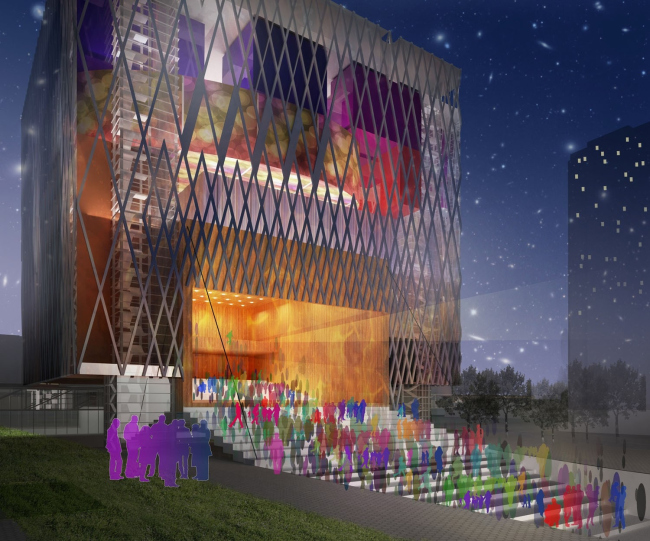
According to the authors, thanks to the glass walls and the loose layout
of the interior volumes, the ambient light will penetrate every remote nook and
cranny of the renovated palace. More importantly, however, the transparent
shell will help people "read" the structure of the complex better -
not only from the inside but also from the outside. This "Laterna
Magica" effect will not only make it easier navigating around the complex
but also will create a memorable architectural image that will look quite
impressive in the nighttime as well.
